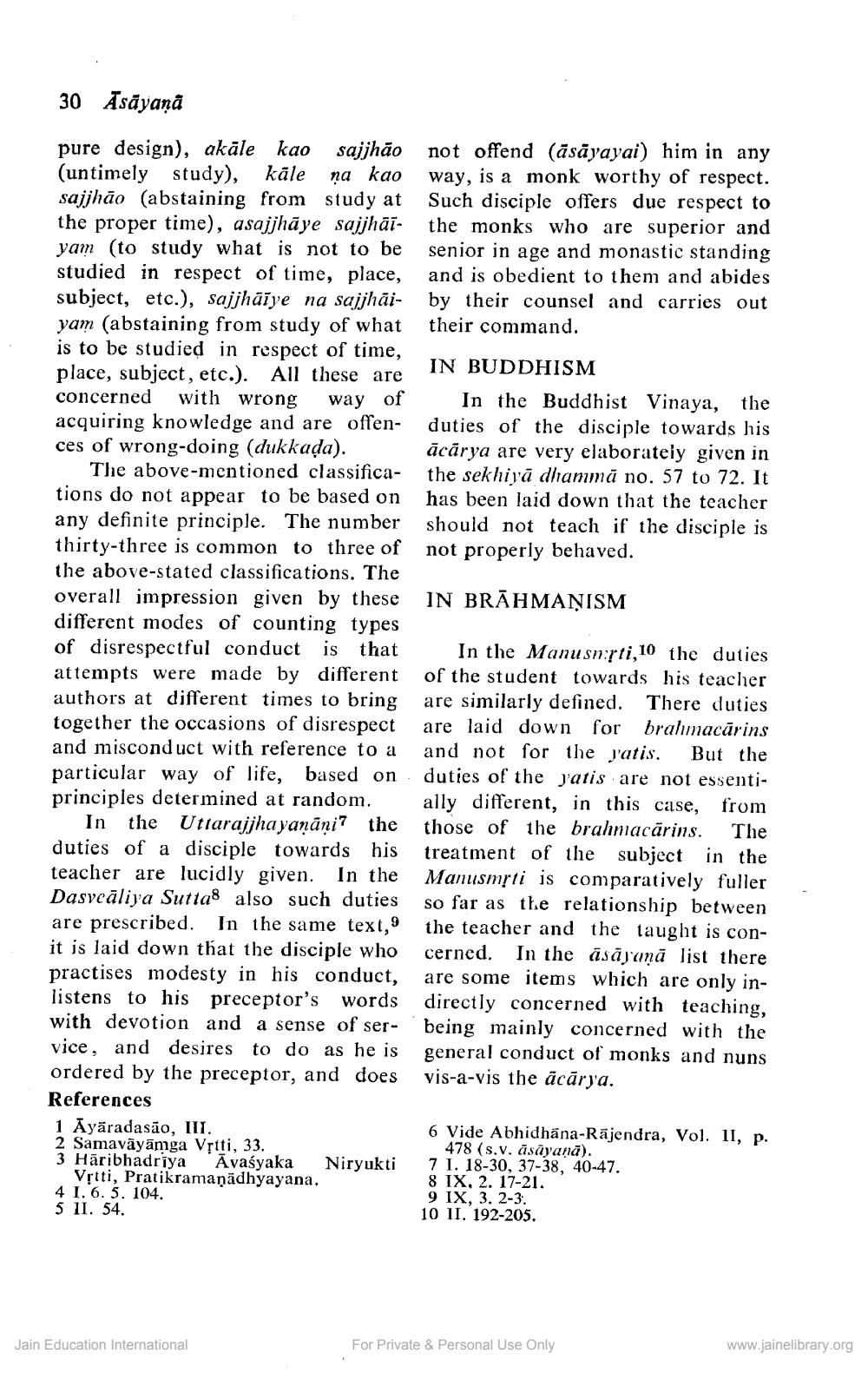________________
30
Āsāyanā
pure design), akāle kao sajjhão not offend (āsāyayai) him in any (untimely study), kāle na kao way, is a monk worthy of respect. sajjhão (abstaining from study at Such disciple offers due respect to the proper time), asajjhāye sajjhâī- the monks who are superior and yam (to study what is not to be senior in age and monastic standing studied in respect of time, place, and is obedient to them and abides subject, etc.), sajjhâīye na sajjhāi- by their counsel and carries out yam (abstaining from study of what their command. is to be studied in respect of time,
IN BUDDHISM place, subject, etc.). All these are concerned with wrong way of In the Buddhist Vinaya, the acquiring knowledge and are offen- duties of the disciple towards his ces of wrong-doing (dukkada). ācārya are very elaborately given in
The above-mentioned classifica- the sekhiyā dhammā no. 57 to 72. It tions do not appear to be based on has been laid down that the teacher any definite principle. The number should not teach if the disciple is thirty-three is common to three of not properly behaved. the above-stated classifications. The overall impression given by these IN BRĀHMANISM different modes of counting types of disrespectful conduct is that In the Manusnști, 10 the duties attempts were made by different of the student towards his teacher authors at different times to bring are similarly defined. There duties together the occasions of disrespectare laid down for brahmacūrins and misconduct with reference to a and not for the patis. But the particular way of life, based on duties of the patis are not essentiprinciples determined at random ally different, in this case, from
In the Uttarajjha yaņānithe those of the brahmacārins. The duties of a disciple towards his treatment of the subject in the teacher are lucidly given. In the Manusmrti is comparatively fuller Dasycālija Suttas also such duties so far as the relationship between are prescribed. In the same text, the teacher and the taught is conit is laid down that the disciple who cerned. In the asaj unā list there practises modesty in his conduct, are some items which are only inlistens to his preceptor's words directly concerned with teaching, with devotion and a sense of ser- being mainly concerned with the vice, and desires to do as he is general conduct of monks and nuns ordered by the preceptor, and does vis-a-vis the ācārya. References 1 Āyaradasão, III.
6 Vide Abhidhana-Rajendra, Vol. II, p. 2 Samavāyāmga Vrtti, 33.
478 (s.v. āsāyanā). 3 Haribhadriya Avaśyaka Niryukti 71. 18-30, 37-38, 40-47. Vrtti, Pratikramanadhyayana,
8 IX, 2. 17-21. 4 1.6.5. 104.
9 IX, 3. 2-3. 5 II. 54.
10 II. 192-205.
For Private & Personal Use Only
Jain Education International
www.jainelibrary.org




